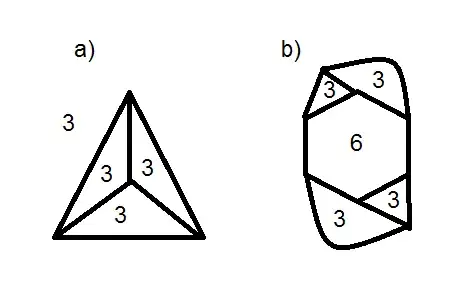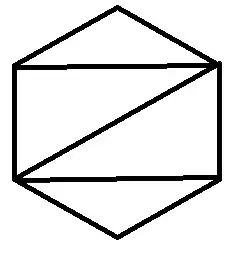Let $f_k$ denote the face degree of a cubic planar graph, then from Euler's Formula it follows that: $$ \sum_{k=1}^F f_k = 6F-12 \tag{1} $$ Now I tried to construct some graphs from that, so let $F=4$ and from $(1)$ we get: $6\cdot4-12=12=\sum f_k$ and so it follows that $f_k=3, \forall k$. Fine. Let's continue with $F=5$: One partition might look like $ 6\cdot 5 -12=18=3+3+3+3+6$. At this point I decided to draw the graphs:
$\hskip1.4in$
The strange thing is that I had to include the outer face in a) but not in b). My reasoning seems to be broken. What did I miss?
